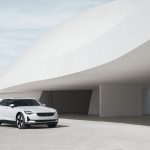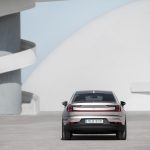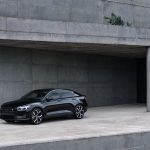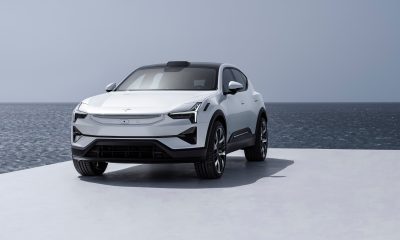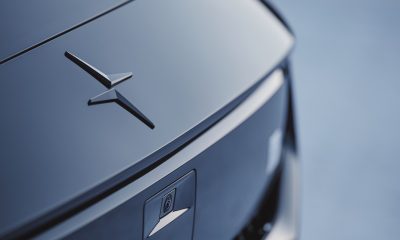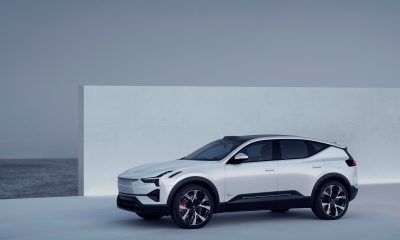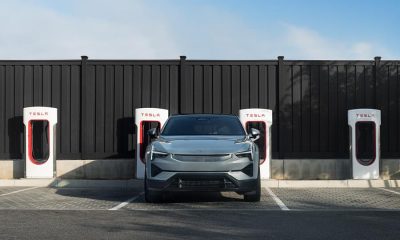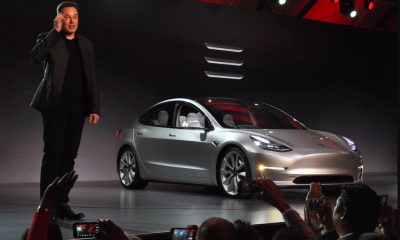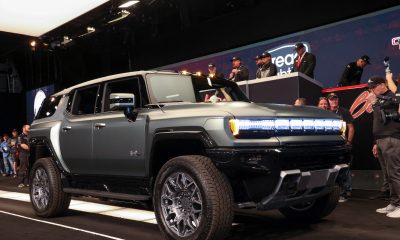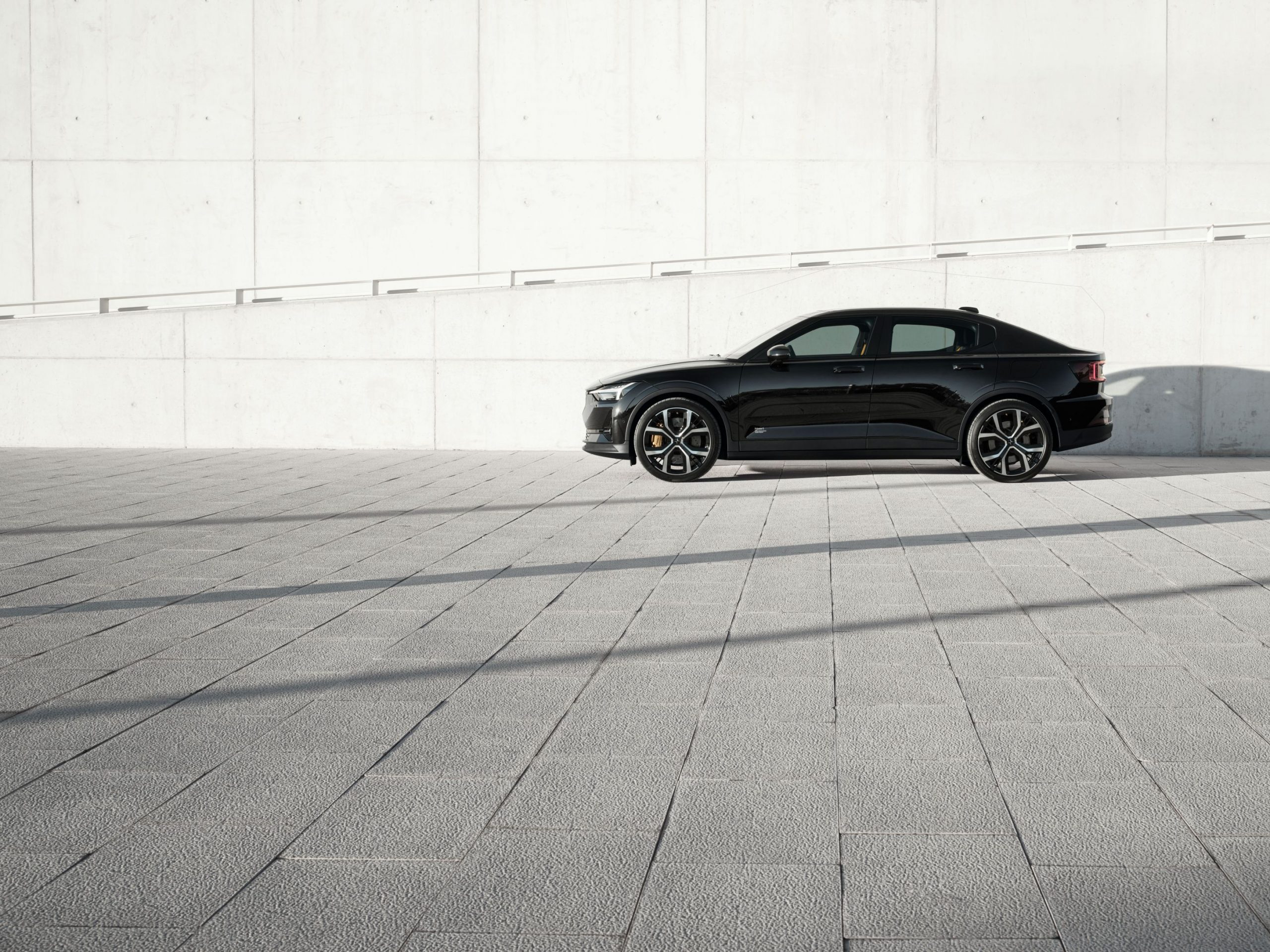
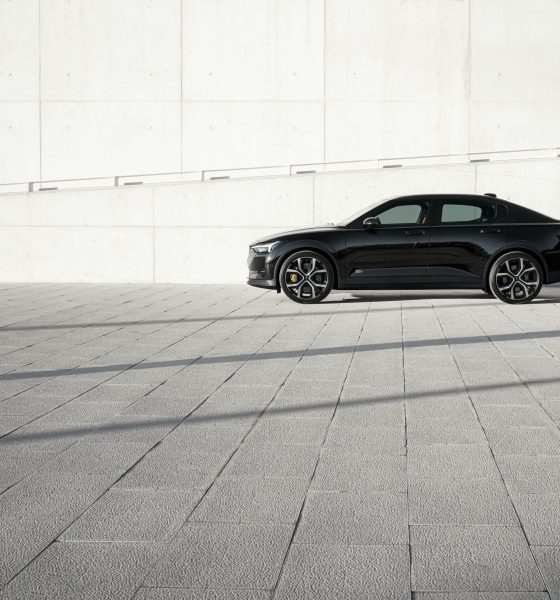
News
Polestar announces pricing for 2023 Polestar 2, along with numerous improvements
Polestar announced pricing for the 2023 Polestar 2, which will start at below $50,000 before any rebates or federal tax incentives. The Swedish automaker also included several new design and efficiency improvements in the 2023 model year, which will make the EV more competitive with other notable cars in the sector thanks to its improved range.
The 2023 Polestar 2 Single Motor configuration will start at just $48,400, or $40,900 when the $7,500 federal tax rebate is included with the vehicle. A competitive price point for the all-electric sedan, Polestar will undercut both of Tesla’s All-Wheel-Drive trim levels of the Model 3, which are priced at $55,990 for the Long Range configuration and $62,990 for the Performance package.
Software improvements rolled out by Polestar have the company anticipating a range increase of the dual-motor configurations of the vehicle by eleven miles. This will bring the EPA-estimated range for the 2023 Polestar 2 to 260 miles per charge. Polestar also included a number of design benefits and new upgrades that intend to improve efficiency and range ratings, with the most notable being the inclusion of a heat pump in the Plus Pack.
The mechanical heat pump is designed to now deliver range improvements in a wider range of temperatures and climates, which can affect EV performance. Cold weather climates are not friendly to all-electric powertrains because it requires more energy to heat the battery cells, which takes away from the driving range. Additionally, climate control features can also decrease efficiency and range. The heat pump helps combat the range loss by using already-heated air in the cabin, among several other mechanical functions that increase overall vehicle efficiency. Tesla was amongst the first EV manufacturers to utilize the heat pump in early builds of the Model Y. The company then translated the proven heat pump system to the Model 3.
Polestar will continue to roll out Over-the-Air updates to upgrade existing Polestar 2 cars equipped with the heat pump at no additional cost to owners.
The Polestar 2 will have optional “packs” that are optional add-ons for owners. The Plus Pack, Pilot Pack, and the Performance Pack both give owners additional features that can improve the ownership experience. The Plus Pack now includes an advanced cabin air filter helping improve air quality within the vehicle. A new air quality sensor and app will also allow drivers to see a breakdown of air circulating outside o the vehicle, including pollen types. The Plus pack adds $4,200 to the vehicle price.
- Credit: Polestar
- Polestar 2 in “Space”
The Pilot Pack is comparable to Tesla’s Autopilot and includes Blind Spot Assist, Cross-Traffic Alerts, Rear Collision Warnings with Mitigation, Adaptive Cruise Control, Pilot Assist, 360° cameras, Automatically dimmed door mirrors, Park Assist, and LED fog lights with cornering functionalities. It costs $3,400 for this package.
The Performance Pack for the 2023 Polestar 2 will equip 68 additional horsepower and 15 lb-ft of torque to the car through a software upgrade. It is only available on Dual-Motor configurations of the car, but the software will be able to purchase as a separate software upgrade — for both existing and future dual-motor cars, with and without the Performance Pack. Polestar plans to release more information on the add-ons this year.
Deliveries of the 2023 Polestar 2 will begin in September with the Single-Motor configuration priced at $48,400. The 2023 Long Range Dual Motor configuration of the Polestar 2 will start at $51,900, with both vehicles eligible for the $7,500 federal EV credit initiative.
I’d love to hear from you! If you have any comments, concerns, or questions, please email me at joey@teslarati.com. You can also reach me on Twitter @KlenderJoey, or if you have news tips, you can email us at tips@teslarati.com.
News
Tesla sends clear message to Waymo with latest Austin Robotaxi move
It is the first expansion Tesla has made in Austin since the one on August 26. The company still operates in the Bay Area of California as well, referring to that program specifically as a “ride-hailing service.”

Tesla has sent a clear message to Waymo with its latest move to its Robotaxi program in Austin, Texas.
Tesla and Waymo are the two true leaders in autonomous ride-hailing to an extent. Tesla has what many believe is a lot of potential due to its prowess with the Supervised Full Self-Driving suite. It is also operating a driverless Robotaxi service in Austin with a “Safety Monitor” that sits in the passenger’s seat.
Tesla explains why Robotaxis now have safety monitors in the driver’s seat
The two companies have been competing heavily in the market since they both launched driverless ride-hailing services in Austin this year: Waymo’s in March and Tesla’s in June.
One of the main drivers in the competition between the two is service area size, or the geofence in which the cars will operate without a driver. In August, the two were tied with a service area of about 90 square miles (233.099 sq. km).
Tesla then expanded to about 170 square miles (440.298 sq. km) on August 26, dwarfing Waymo’s service area and expanding to freeways. Tesla’s freeway operation of the Robotaxi suite requires the Safety Monitor to be in the driver’s seat for safety reasons.
On Tuesday evening, Tesla made another move that sent a clear message to Waymo, as it expanded once again, this time to 243 square miles (629.367 sq. km).
This is according to Robotracker:
Here’s a comparison of Tesla’s geofence in Austin vs. Waymo’s
Tesla’s now spans 243 square miles, almost three times the size of Waymo’s at 89 square miles https://t.co/OCAHQDQhzb pic.twitter.com/wq5bHQXCp4
— TESLARATI (@Teslarati) October 29, 2025
It is the first expansion Tesla has made in Austin since the one on August 26. The company still operates in the Bay Area of California as well, referring to that program specifically as a “ride-hailing service.”
Yesterday, it expanded that service to the San Jose Mineta International Airport, something it has been working on for several months.
Waymo has its own set of distinct advantages over Tesla as well, as it operates in more cities and states than the EV maker. Waymo currently has its autonomous vehicle services in Phoenix, Arizona, San Francisco, Los Angeles, Austin, and Atlanta, Georgia.
Tesla plans to have half of the U.S. population with access to the Robotaxi platform by the end of the year.
News
Tesla exec reveals shock development with Cybercab
“If we have to have a steering wheel, it can have a steering wheel and pedals.”
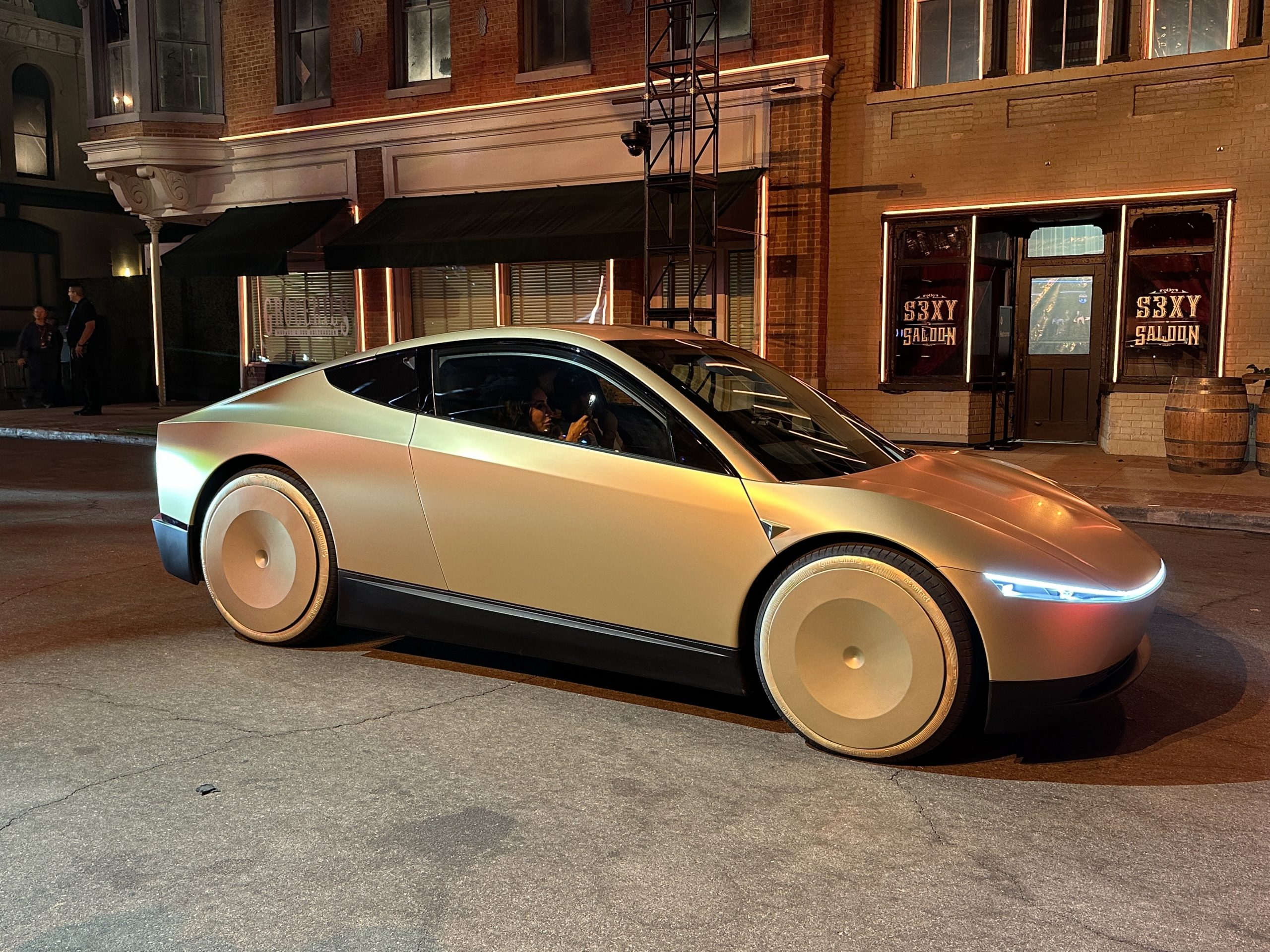
Tesla is planning to launch the Cybercab in the second quarter of next year, and it is designed to be fully autonomous, so much so that the company is planning to build it without a steering wheel or pedals.
However, a Tesla executive said today that the company could ditch that idea altogether in what would be a major shift from the plans the company, and especially its CEO Elon Musk, have announced for the Cybercab.
Earlier today, Robyn Denholm, the company’s Chair for the Board of Directors, revealed that Tesla would potentially switch up its plans for the Cybercab based on potential regulatory requirements.
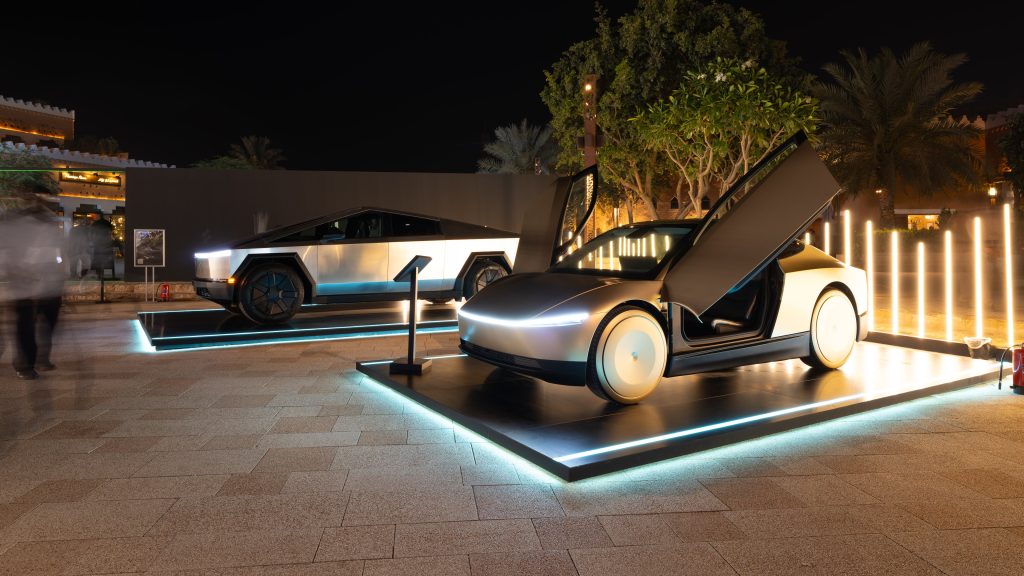
Credit: Tesla Europe & Middle East | X
Currently, even autonomous vehicles that operate for companies like Tesla and Waymo are required to have steering wheels and pedals. From a regulatory perspective, this could halt the plans Tesla has for Cybercab.
Denholm said in an interview with Bloomberg:
“If we have to have a steering wheel, it can have a steering wheel and pedals.”
Interestingly, Musk and Tesla have not veered away from the idea that the vehicle will be without these operational must-haves.
Since the vehicle was revealed last October at the We, Robot event in Los Angeles, Tesla has maintained that the car would be built without a steering wheel or pedals, and would equip two seats, which is what is statistically most popular in ride-sharing, as the vast majority of rides have only one or two passengers.
Musk doubled down on the plans for Cybercab as recently as last week, when he said:
“That’s really a vehicle that’s optimized for full autonomy. It, in fact, does not have a steering wheel or pedals and is really an enduring optimization on minimizing cost per mile for fully considered cost per mile of operation. For our other vehicles, they still have a little bit of the horse carriage thing going on where, obviously, if you’ve got steering wheels and pedals and you’re designing a car that people might want to go very direct past acceleration and tight cornering, like high-performance cars, then you’re going to design a different car than one that is optimized for a comfortable ride and doesn’t expect to go past sort of 85 or 90 miles an hour.”
Cybercab is fully conceptualized as a vehicle that has zero need for pedals or a steering wheel because it is aimed toward being fully reliant on a Level 5 autonomous platform.
Tesla is ramping its hiring for Cybercab vehicle manufacturing roles
Regulators could get in the way of this, however, and although the car could drive itself and be a great solution for ride-hailing, it might need to have these controls to hit the road in the future.
News
SpaceX opens up free Starlink service for those impacted by Hurricane Melissa
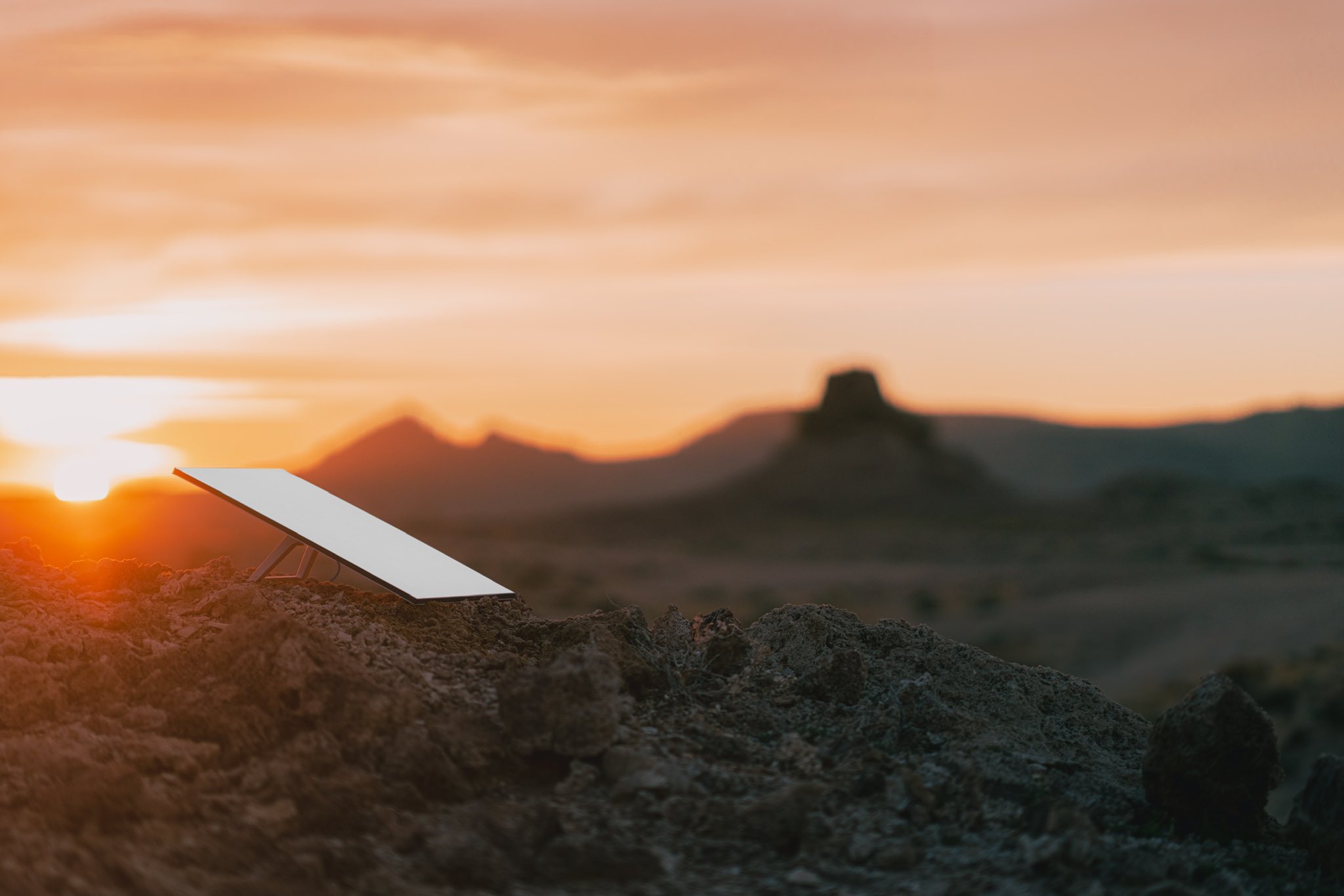
SpaceX is opening up its internet service, Starlink, to those impacted by Hurricane Melissa, as it made landfall in Jamaica and the Bahamas as a Category 5 storm.
Hurricane Melissa is expected to reach wind speeds of over 165 MPH over the next few days as it extends out into the Atlantic Ocean by Thursday and Friday.
Satellite imagery shows Hurricane #Melissa‘s growth from its formation on October 21 to a Category 5 hurricane through October 27, 2025. #HurricaneMelissa pic.twitter.com/goR3Hbgb9c
— The Weather Network (@weathernetwork) October 27, 2025
Citizens in Jamaica and the Bahamas have been preparing for the storm for the past week, getting necessary goods together and preparing for the massive storm to arrive. It finally did yesterday, and the first images and video of the storm are showing that it could destroy many parts of both countries.
Starlink is now being opened up for free until the end of November for those impacted by the storm in Jamaica and the Bahamas, SpaceX announced today:
For those impacted by Hurricane Melissa in Jamaica and the Bahamas, Starlink service is now free through the end of November to help with response and recovery efforts → https://t.co/fUko3xSviJ
— Starlink (@Starlink) October 28, 2025
It is a move similar to the one the company made last year as Hurricane Helene made its way through the United States, destroying homes and property across the East Coast. SpaceX offered free service for those impacted by the destruction caused by the storm.
The free Starlink service was available until the end of 2024.
Elon Musk’s companies have also made similar moves to help out those who are impacted by natural disasters. Tesla has offered Free Supercharging in the past, most notably during the California wildfires.
Tesla and SpaceX’s LA fire relief efforts: Cybertrucks, free Starlink and more
One major advantage of Starlink is that it is available for use in situations like this one, where power might be required to operate things like a modem and router.
Internet access is a crucial part of survival in these situations, especially as it can be the last leg some stand on to get in touch with emergency services or loved ones.
-

 Elon Musk2 weeks ago
Elon Musk2 weeks agoSpaceX posts Starship booster feat that’s so nutty, it doesn’t even look real
-

 Elon Musk2 weeks ago
Elon Musk2 weeks agoTesla Full Self-Driving gets an offer to be insured for ‘almost free’
-

 News2 weeks ago
News2 weeks agoElon Musk confirms Tesla FSD V14.2 will see widespread rollout
-

 News2 weeks ago
News2 weeks agoTesla is adding an interesting feature to its centerscreen in a coming update
-

 News2 weeks ago
News2 weeks agoTesla launches new interior option for Model Y
-

 News2 weeks ago
News2 weeks agoTesla widens rollout of new Full Self-Driving suite to more owners
-

 Elon Musk2 weeks ago
Elon Musk2 weeks agoTesla CEO Elon Musk’s $1 trillion pay package hits first adversity from proxy firm
-

 News1 week ago
News1 week agoTesla might be doing away with a long-included feature with its vehicles

